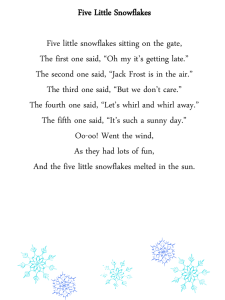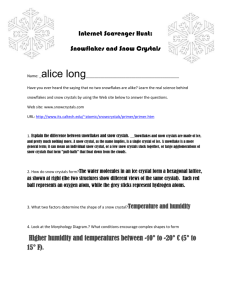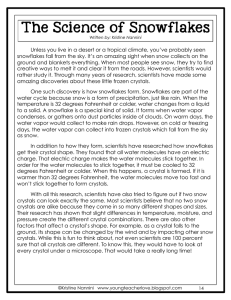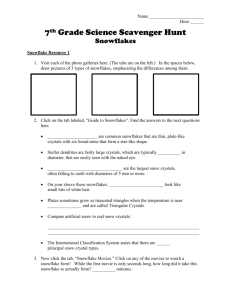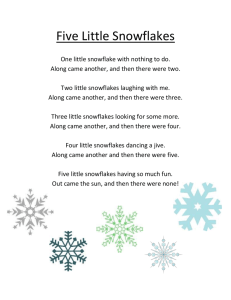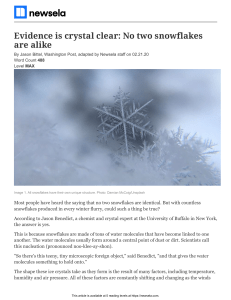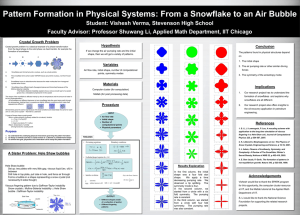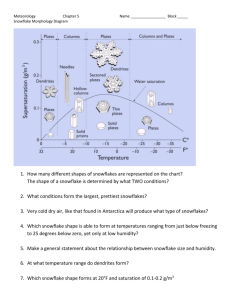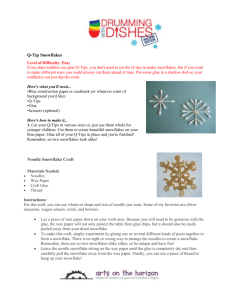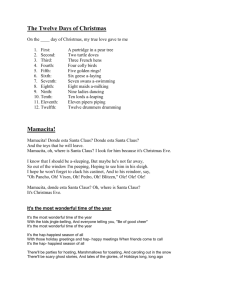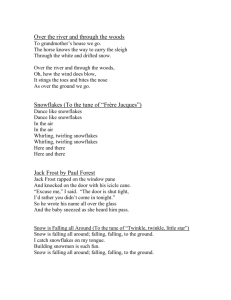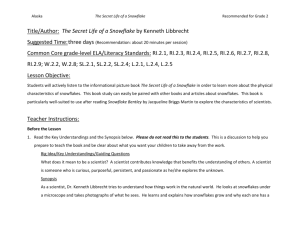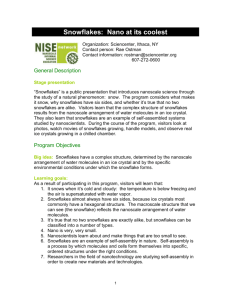Snowflake slides
advertisement
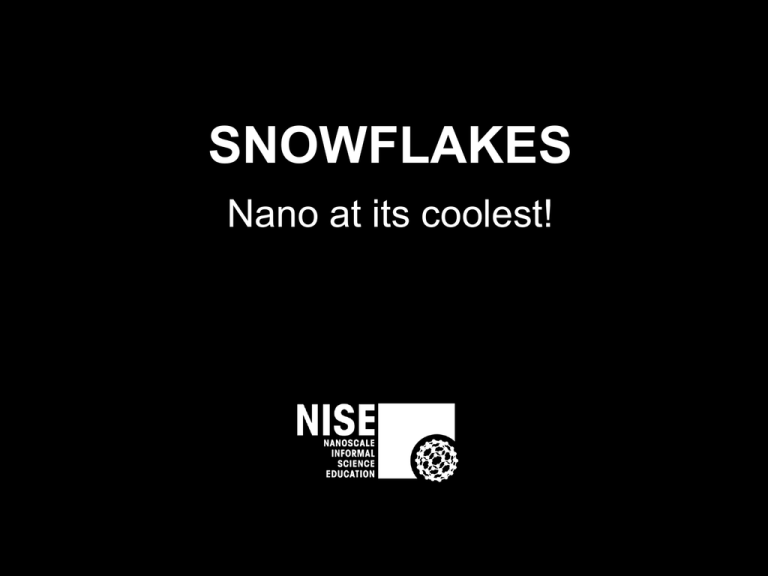
SNOWFLAKES Nano at its coolest! What do you know about snow? What do you wonder about snow? Outline • When does it snow? • Why do snowflakes have six sides? • Is every snowflake different? When does it snow? It snows when… • It’s cold (below freezing) • It’s cloudy (water vapor in the air) Why do snowflakes have six sides? Nano is very, very small • A nanometer is a billionth of a meter. • Molecules are nanometers across. Snowflakes are nano! • Nanoscience is nature and technology. • Water molecules form ice crystals. Shape is determined by molecular structure Basic shapes of snowflakes Molecular structure of ice crystals Is every snowflake different? Snowflakes have many shapes Type depends on temperature and humidity Snowflakes self-assemble • Molecules and cells form themselves into structures… • …under the right conditions, with the right raw materials. Snowflakes and nano, in the future New ways to build tiny, nano-sized structures Snowflakes and nano, right now! Ice crystals self-assemble inside the museum Review • When does it snow? – Cold, cloudy conditions • Why do snowflakes have six sides? – Molecular structure of ice crystals • Is every snowflake different? – Temperature and humidity Image sources Courtesy of Kenneth Libbrecht, www.snowcrystals.com Image sources (continued) iStockphoto.com Courtesy of NOAA National Weather Service Collection Courtesy of NASA Marshall Space Flight Center Courtesy of IBM This project was supported by the National Science Foundation under Grant No. ESI-0532536. Any opinions, findings, and conclusions or recommendations are those of the author and do not necessarily reflect the views of the Foundation.
